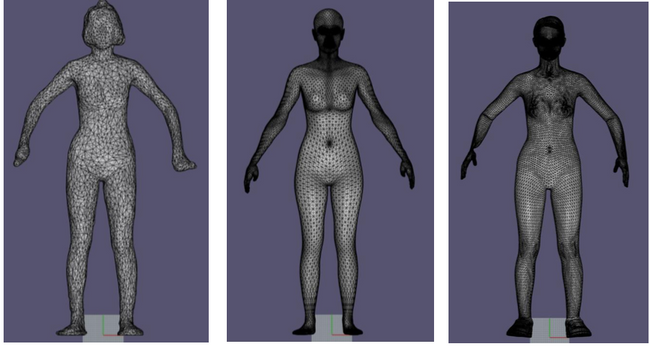AI x FASHION
Virtual Fashion Catwalk
Computer vision algorithms were used to estimate skeletal movement data from an archive fashion show video. This data was then turned into a 3D pose simulation using another algorithm and applied to a 3D avatar in Blender to replicate the model’s movement in the original video.
CLO software was used to design and animate the garments for the avatar models, and style transfer was used to develop the textiles and final garment surfaces. The 3D environment for the virtual show was created in gaming engine Unity.
Featured in Forbes article "Why Fashion Needs More Imagination When It Comes To Using Artificial Intelligence"
Style transfer for print design
Using AI style transfer to generate a print inspired by an image and determined by the shape of the garment pattern.

FIA x Digital Domain Real-Time Cloth Simulation
3D Bespoke Fit Customisation
London College of Fashion
MA Pattern & Garment technology
Masters Project
2019
Current grading and made to measure practice relies on statistic averages and oversimplified models, based on a small number of linear measurements, which do not reflect the complexity of body shapes. For example identical waist and hip circumferences can look very different on different subjects, affecting the fit of the garment.
My proposed solution is an algorithm that works directly with body scans and 3D garment models, to ensure that the customised garments fit exactly the three-dimensional body shapes, instead of relying on linear measurements. In fact it is not necessary to take any measurements at all.
The process I followed requires a garment pattern simulated in 3D on the base size avatar, and an accurate 3D avatar of the customer, obtained from raw data of the 3D body scan, edited in order to produce a usable avatar, that still maintains exact shapes and asymmetries.

The algorithm is made up of two parts: the first creates ordered reference surfaces determined by body landmarks such as waist, bust points, shoulder points etc;

The second algorithm morphs the garment from the base size avatar to the avatars of the customers, maintaining proportions and internal relations. The video shows a garment being transformed very quickly from one size to another.

The patterns obtained from the 3D custom garment have some irregularities but show the difference for example in bust dart suppression or in the posture. The test garments are made from the unaltered patterns.

PARAMETRIC DESIGN Customisation
London College of Fashion
MA Pattern & Garment technology
Masters Project
2019
The second part of my Masters project was about design customisation, using parametric modelling in order to visualise changes in real time. I developed two scripts, one for embroidery and the second for laser cutting.
















